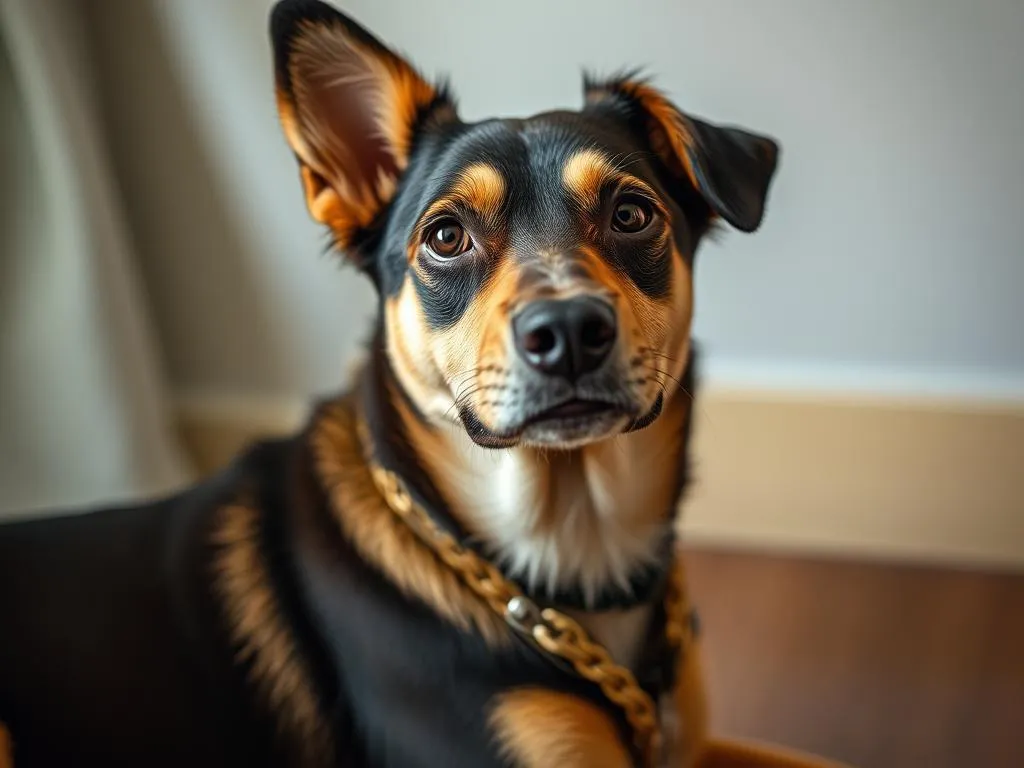
Understanding dog behavior is crucial for building a harmonious relationship with our furry companions. One of the more intriguing aspects of canine behavior is protectiveness. Many dog owners often find themselves wondering, why is my dog so protective of me? This behavior can stem from various factors, including instincts, attachment, and past experiences. By exploring these reasons, we can enhance our bond with our pets and create a more balanced environment.
Understanding Dog Behavior
The Canine Social Structure
Dogs are inherently social animals and have evolved from their wild ancestors, who lived in packs. Within these packs, a hierarchy is established, which is vital for maintaining order and cooperation. Understanding this social structure can shed light on why your dog may display protective behavior. In a human household, the dog often sees its owner as the leader or alpha of the pack, prompting them to act protectively towards their leader and their territory.
Communication Signals in Dogs
Dogs communicate using a variety of signals, including body language, vocalizations, and facial expressions. Recognizing these signals can help you understand your dog’s emotions and intentions. When a dog is feeling protective, you might observe body language signs such as raised hackles, a stiff posture, and intense eye contact. Growling or barking can also accompany these signals, indicating that your dog perceives a potential threat.
Reasons Why Dogs Are Protective
Instinctual Behavior
Protective behavior in dogs is often instinctual, rooted in their ancestry. In the wild, canines protect their pack from potential threats, ensuring the survival of their group. This instinct has been carried over into domestic dogs, who may exhibit similar behaviors when they perceive threats to their owners. For example, a dog may bark when a stranger approaches, signaling a protective instinct derived from its wild ancestors.
Attachment and Bonding
The bond between a dog and its owner plays a significant role in protective behavior. Dogs that form strong attachments to their humans are more likely to exhibit protective instincts. This attachment is built through consistent care, positive interactions, and shared experiences. When your dog views you as part of its pack, it will instinctively want to protect you from perceived dangers.
Past Experiences
A dog’s past experiences can greatly influence its behavior. Dogs that have experienced trauma or negative situations, such as abuse or abandonment, may develop heightened protective instincts. For instance, a rescue dog that has been mistreated may become overly protective of its new owner, viewing them as a source of safety. Understanding a dog’s background can provide insight into their protective behavior, helping owners navigate their needs more effectively.
Genetic Factors
Certain breeds are genetically predisposed to exhibit protective behaviors. Breeds such as German Shepherds, Rottweilers, and Doberman Pinschers are known for their guarding instincts. These dogs have been selectively bred for their protective capabilities, making them more likely to display such behaviors. While not all dogs of these breeds will be overly protective, it’s essential to recognize that genetics can play a role in your dog’s behavior.
Signs Your Dog Is Being Protective
Body Language Indicators
Recognizing your dog’s body language is crucial in understanding its protective instincts. Some common indicators include:
- Stiff posture: When a dog stands rigidly, it may be preparing to defend its territory.
- Raised hackles: This physical response can signal alertness and a potential threat.
- Intense eye contact: A dog that locks eyes with a perceived threat is displaying confidence and protectiveness.
- Growling and barking: Vocalizations often accompany protective behaviors, serving as warnings to intruders.
Situational Triggers
Several scenarios can provoke protective behavior in dogs. Common triggers include:
- Strangers approaching: Dogs may bark or position themselves in front of their owner when an unfamiliar person comes too close.
- Loud noises: Sudden sounds like fireworks or thunder can cause a dog to feel anxious, leading to protective behavior.
- Changes in routine: Any alteration in the household environment, such as new people or pets, can trigger a dog’s protective instincts.
Behavioral Changes
Protective behavior can manifest through various behavioral changes. If your dog becomes more vigilant, displaying increased alertness or guarding behaviors, it may be a sign of protectiveness. Other changes might include:
- Following you closely: A protective dog may stay near you to monitor your safety.
- Increased barking: If your dog barks more often, especially at unfamiliar sounds or people, this could indicate protectiveness.
- Refusal to engage: Some dogs may become less sociable, avoiding interactions with others when they feel the need to protect.
Is Protectiveness Always a Good Thing?
Positive Aspects of Protective Behavior
Having a protective dog can provide several benefits, such as:
- Increased security: A protective dog can deter intruders and alert you to potential dangers.
- Companionship: The bond formed through protectiveness can enhance your relationship, providing comfort and loyalty.
- Emotional support: A dog that protects you often demonstrates love and devotion, which can be reassuring during stressful times.
Potential Risks and Challenges
While protectiveness can be positive, it also has potential risks. Situations where protectiveness turns problematic include:
- Aggression towards visitors: A dog that is overly protective may become aggressive when encountering guests, leading to dangerous situations.
- Fear-based reactions: Dogs exhibiting extreme protectiveness may react aggressively out of fear, which can escalate conflicts.
- Socialization issues: A protective dog may struggle with socialization, making it challenging to interact with other dogs and people.
Finding a balance between protectiveness and socialization is crucial for a well-adjusted dog.
How to Manage Your Dog’s Protective Behavior
Training and Socialization Techniques
Early socialization is key in managing your dog’s protective behavior. Exposing your dog to various environments, people, and other animals can help them become comfortable with new experiences. Techniques include:
- Positive reinforcement: Reward your dog for calm behavior around strangers or new situations, reinforcing non-protective responses.
- Controlled introductions: Gradually introduce your dog to new people or situations while ensuring they feel safe.
Positive Reinforcement Strategies
Utilizing positive reinforcement can be effective in modifying your dog’s behavior. Some strategies include:
- Reward calm behavior: When your dog remains calm in the presence of a stranger, reward them with treats or praise.
- Redirect focus: If your dog begins to display protective behavior, redirect their attention to a toy or command to refocus their energy.
Consulting Professionals
If your dog’s protectiveness becomes difficult to manage, consulting a professional dog trainer or behaviorist may be necessary. Professionals can provide tailored strategies to address your dog’s specific needs and challenges. Seeking help can lead to a more balanced and harmonious household.
Conclusion
Understanding why is my dog so protective of me is essential for fostering a loving and secure environment for both you and your dog. By recognizing the underlying reasons for this behavior—such as instinctual tendencies, attachment, past experiences, and genetic factors—you can work towards managing and nurturing your dog’s protective instincts. Building a strong bond with your pet and ensuring proper socialization will not only help mitigate excessive protectiveness but also enhance the overall relationship between you and your furry companion.
FAQs
Why does my dog growl at strangers?
Dogs growl as a warning signal. If your dog growls at strangers, it may be trying to communicate discomfort or a perceived threat. Understanding the context and body language accompanying the growl can help you address the behavior appropriately.
Can protective behavior be trained out of a dog?
While you may not completely eliminate protective instincts, you can manage and redirect them through training and positive reinforcement. Socialization plays a crucial role in helping your dog feel more comfortable around unfamiliar situations.
Are certain breeds more protective than others?
Yes, some breeds are genetically predisposed to being more protective. Breeds like German Shepherds, Rottweilers, and Bullmastiffs are known for their guarding instincts, but individual temperament and training also play significant roles.
How can I help my dog feel more secure?
Providing a stable and loving environment is key to helping your dog feel secure. Consistent routines, positive reinforcement, and gradual exposure to new experiences can foster a sense of safety and reduce excessive protective behavior.









